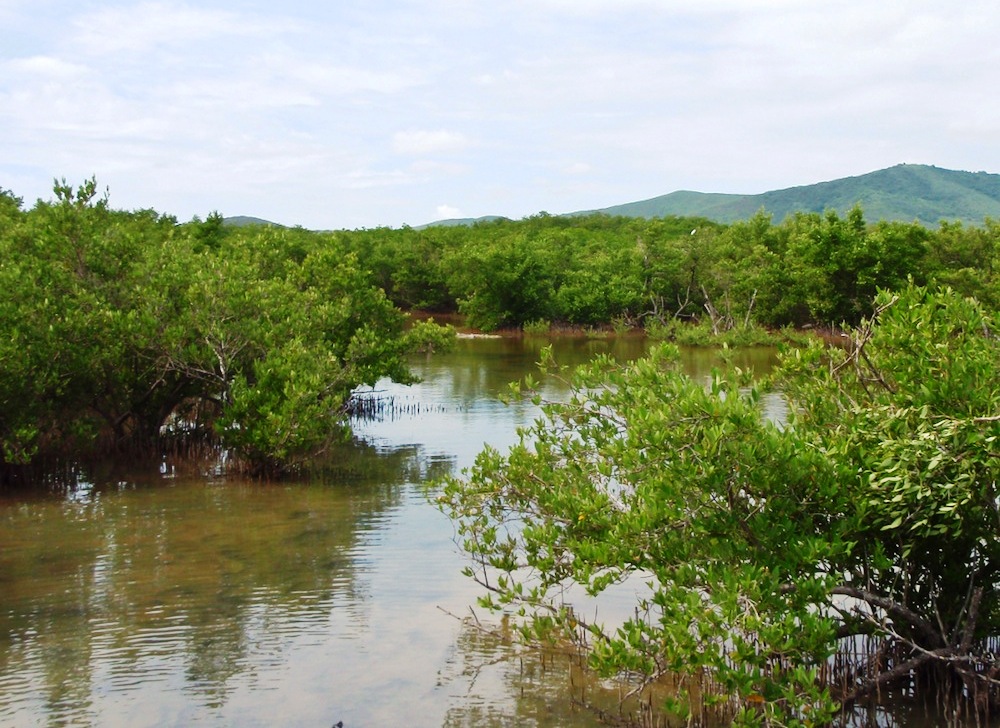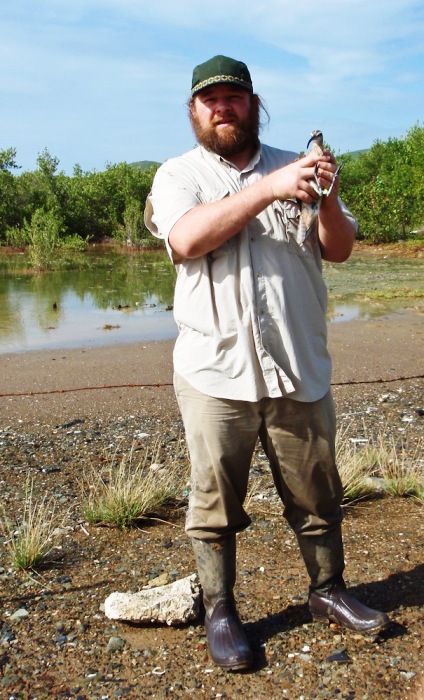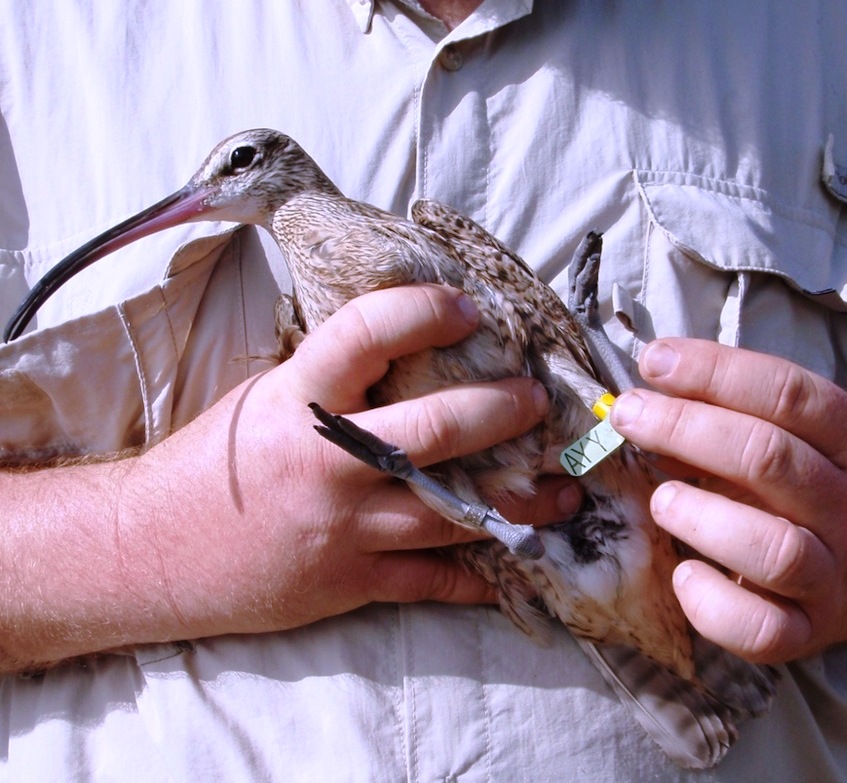When Hope, the whimbrel, flew down from Hudson Bay, Canada, to St. Croix to winter this year, scientists lay in wait like paparazzi after a pampered starlet, hoping to capture the bird and take off a broken transmitter tag.
Hope is one of a number of whimbrels, wading shorebirds, captured in Virginia by biologists from the Center for Conservation Biology and The Nature Conservancy. Biologists are investigating the life-cycle requirements of the species and, as part of the study, the five largest birds were fitted with solar-powered satellite transmitters and identifying leg bands and released unharmed.
Hope was one of those five whimbrels captured and tagged in 2009, and has taken the scientists on a vicarious ride since then, according to the Center for Conservation Biology, College of William and Mary – Virginia Commonwealth University. This is at least the fourth St. Croix voyage for Hope.
Fletcher Smith, a biologist with CCB traveled 1,500 miles to St. Croix in November to catch up with Hope, according to a statement from Bryan Watts, the center’s director.
Since first capturing Hope on May19, 2009, in Virginia and fitting her with a satellite transmitter, Smith and a team of researchers have tracked the bird for more than 50,000 miles back and forth four times between breeding grounds on the Mackenzie River Delta in the Northwest Territories of Canada and her winter territory on Great Pond, St. Croix.
During that time Hope has made extraordinary flights over the open ocean, encountered several major storms, and along with two dozen other tracked birds has revealed important details of migration previously unknown to science, according to Watts.
In November, Smith was on the island to capture Hope again and remove the transmitter that had stopped transmitting. Hope’s signal was lost shortly after her arrival on Great Pond in early September.
Observations and photographs by local researcher Lisa Yntema made it clear that the transmitter’s antenna had broken off, according to Watts, so researchers plotted with local officials to capture Hope and remove her transmitter.

Her transmitter was removed but leg bands and her identifying coded flag were left in place for future identification. Removal of the transmitter marks the end of the most successful tracking effort of a shorebird to date but not the end of Hope.
Scientists will continue to search for her along Box Tree Creek in Virginia during spring migration and on her winter territory in Great Pond for years to come.
Hope has taught the research community a great deal about the migratory pathways and habits of whimbrels. She has helped illustrate the importance of both local efforts and international cooperation to the conservation of these highly migratory species.
Great Pond, Hope’s winter home, is a 50-hectare mangrove wetland designated as an Important Bird Area by Birdlife International and supports at least 72 bird species during some portion of their life cycle.
These include locally rare breeding birds such as the Least Tern and Wilson’s Plover and many migrant shorebird species besides whimbrels, according to Watts.
Hope is one of two dozen birds that have been tracked in a collaborative, multi-national effort designed to discover migratory routes that connect breeding and winter areas and to identify migratory staging areas that are critical to the conservation of this declining species, Watts said.







